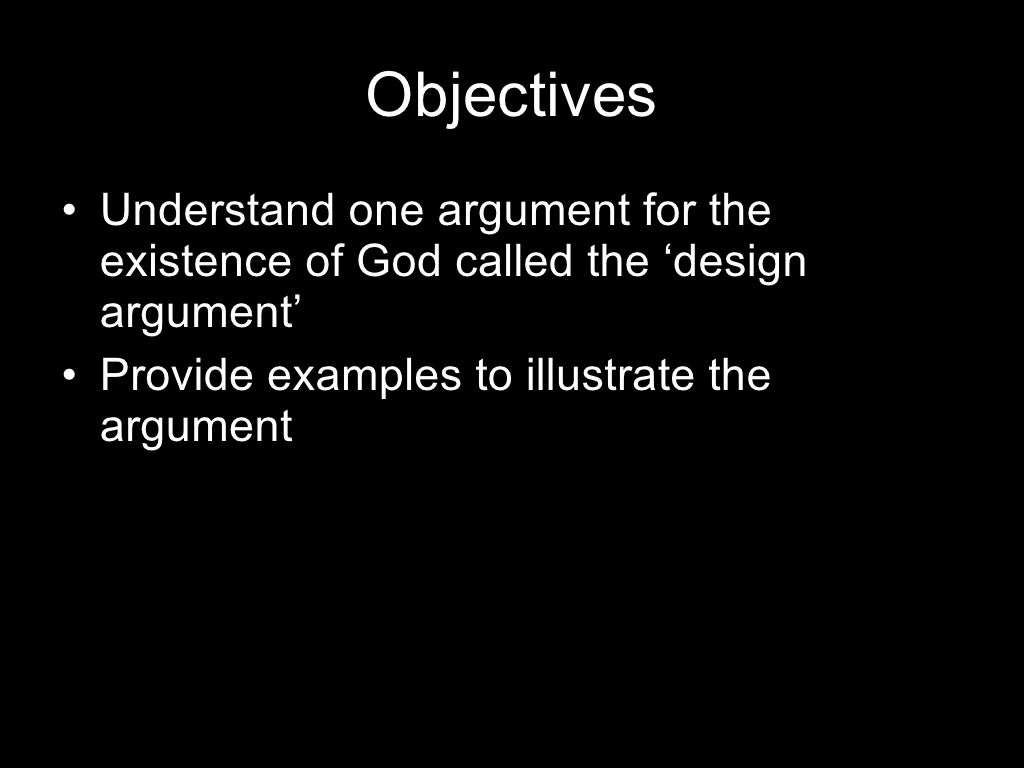Table Of Content

If we allow the naturalist to fill itout in ways that reduce this vagueness, the design theorist should beaccorded the same benefit (Jantzen 2014a, 184). Provides the basis of comparison by which we distinguish between designed objects and natural objects. We are able to infer the presence of design only to the extent that the characteristics of an object differ from natural characteristics.
Fideism and rejection of natural theology
Although level shifting of specific explanatory factors seems to workless easily within purely physical explanations, relocation attemptsinvolving broad physical principles can sometimes avoid suchdifficulties. For instance, for centuries determinism was a basicbackground component of scientific explanations (apparently stochasticprocesses being explained away epistemically). Then, early in the 20thcentury physics was largely converted to a quantum mechanical pictureof nature as involving an irreducible indeterminism at a fundamentallevel—apparently deterministic phenomena now being what wasexplained away.
1 Analogical Design Arguments: Schema 1
How Darwin anticipated the "intelligent design" argument - The Guardian
How Darwin anticipated the "intelligent design" argument.
Posted: Sat, 09 Feb 2008 08:00:00 GMT [source]
Themind in question is typically taken to be supernatural.Philosophically inclined thinkers have both historically and atpresent labored to shape the relevant intuition into a more formal,logically rigorous inference. The resultant theistic arguments, intheir various logical forms, share a focus on plan, purpose,intention, and design, and are thus classified as teleologicalarguments (or, frequently, as arguments from or to design). Patil writes that, in this view, it is not the complexity of the world from which one can infer the existence of a creator, but the fact that "the world is made up of parts". Later, variants on the argument from design were produced in Western philosophy and by Christian fundamentalism. The design claim is often challenged as an argument from ignorance, since it is often unexplained or unsupported, or explained by unscientific conjecture. Supporters of design assume that natural objects and man-made objects have similar properties, therefore both must be designed.
Derham's natural theology
Spider-Man Spins a Design Argument Spider-Man Spins a Design Argument - Reasons to Believe
Spider-Man Spins a Design Argument Spider-Man Spins a Design Argument.
Posted: Fri, 29 Jun 2012 07:00:00 GMT [source]
The sophistication and incredible detail we observe in nature could not have occurred by chance. Those opposed would say thatall teleological concepts in biology must, in one way or another, bereduced to natural selection. Design-type arguments are largely unproblematic when based upon thingsnature clearly could not or would not produce (e.g.,most human artifacts), or when the intelligent agency is itself‘natural’ (human, alien, etc.). Identifying designedtraces of ‘lost’ human civilizations or even non-humancivilizations (via SETI) could in principle be uncontroversial.Objections to design inferences typically arise only when the positeddesigner is something more exotic or perhaps supernatural.
Conclusion
Such order was taken to be suggestive ofminds in that it seemed nearly self-evidently the sort of thing mindswere prone to produce. It was a property whosemind-resonating character we could unhesitatingly attributeto intent. As before, the problem for the fine-tuning argument is that we lack both of the pieces that are needed to justify an inference of design. Such thinkers, however, frequently maintain that the existence of God is needed to explain the purposive quality of the evolutionary process.

Subjective values are those beliefs that guide and drive behaviors deemed permissible as determined by either an individual or an individual’s culture. Objective values govern morally permissible and desired outcomes that apply to all moral agents. Moral arguments for the existence of God depend upon the existence of objective values. Perception and appreciation of the incredible intricacy and the beautyof things in nature—whether biological or cosmic—hascertainly inclined many toward thoughts of purpose and design innature, and has constituted important moments of affirmation for thosewho already accept design positions. Regardless of what one thinks ofthe arguments at this point, so long as nature has the power to moveus (as even Kant admitted that the ‘starry heavens above’did), design convictions and arguments are unlikely to disappearquietly. It’s conceivable that life could exist in a universe withparameter values that we do not typically believe are life-permitting.In other words, there may be exotic forms of life that could survivein a very different sort of universe.
Book contents
And if there are infinitely many universes but they all have the same fine-tuned constants, obviously nothing is gained. Versions of this criticism are endorsed by Draper et al. (2007) andLandsman (2016). Hacking (1987) regards only those versions of theargument from fine-tuning for the multiverse as guilty of the inversegambler’s fallacy that infer the existence of multiple universesin a temporal sequence. Biological fine-tuning for survival and reproduction, as marvellous asit often appears, is regarded as unmysterious by biologists becauseevolution as driven by natural and sexual selection can generate it(see Section 1.3). One may hope that, similarly, future developments in fundamentalphysics will reveal principles or mechanisms which explain thelife-friendly conditions in our universe. Many theists (those who assert the existence of god/s) have argued against both the logical and evidential formulations of the problem of evil.
4 Can We Expect a Designer to Design?
If God knows about the suffering and is able to stop it but does not wish to assuage the pain, God is not omnibenevolent. At the very least, Hume argues, the existence of evil does not justify a belief in a caring Creator. An ontological argument for God was proposed by the Italian philosopher, monk, and Archbishop of Canterbury Anselm (1033–1109). He, as a person and as a prior of an abbey, had experienced and witnessed doubt.

According to the argument, the appearance of design in nature is evidence for the existence of God. The word "teleological" comes from the Ancient Greek telos, which means "end" or "purpose". The natural universe is orderly — the regularity of the seasons, the consistency of chemical processes, the biological development of organisms’ capacities, and so on.2. So complex order implies the existence of an external orderer that imposed order upon the universe.4. For brevity’s sake, let’s call the very intelligent and powerful orderer “God.”7. Many physicists nowadays believe that a specific version of themultiverse hypothesis is indeed suggested by contemporary developmentsin fundamental physics, notably by the combination of inflationarycosmology and string theory, both of which have been introduced in Section 2.3.
Insofar as they presuppose that we already know the right kind of intelligent being exists, they cannot stand alone as a justification for believing that God exists. It is the very existence of the right kind of intelligent being that is at issue in the dispute over whether God exists. While design inferences have a variety of scientifically legitimate uses, they cannot stand alone as arguments for God’s existence.
The argument was propounded by medieval Christian thinkers, especially St. Thomas Aquinas, and was developed in great detail in the 17th and 18th centuries by writers such as Samuel Clarke (1675–1729) and William Paley. It was powerfully criticized by David Hume in his Dialogues Concerning Natural Religion. In the late 20th century the argument was revived as the doctrine of intelligent design.
Texts carry with them essential marks ofmind, and indeed in understanding a text we see at least partway intothe mind(s) involved. Various alien artifacts (if any)—of whichwe have had no prior experience whatever—could fall into thiscategory as well. Similarly, it has been held that we sometimesimmediately recognize that order of the requisite sort justis a sign of mind and intent. However, principle (6) (that the relevant design-like properties arenot producible by unguided natural means) will be more problematic inevolutionary biology. It can of course be said that any form in which the universe might be is statistically enormously improbable as it is only one of a virtual infinity of possible forms. But its actual form is no more improbable, in this sense, than innumerable others.
I cannot persuade myself that a beneficent & omnipotent God would have designedly created the Ichneumonidae with the express intention of their feeding within the living bodies of caterpillars, or that a cat should play with mice. Not believing this, I see no necessity in the belief that the eye was expressly designed. Swinburne also sees the complexity in the universe and cannot put it down to mere chance – stating that the most likely explanation would be that God is the creator. Augustine of Hippo (A.D. 354–430) presented a classic teleological perspective in his work City of God. He describes the "city of man" and essentially posits that God's plan is to replace the city of man with the city of God (at some as-yet-unknown point in the future). Whether this is to happen gradually or suddenly is not made clear in Augustine's work.
Furthermore, we propose a Phrase Inference Network to encode the linguistic relations of phrase pairs as semantic connections for relation inference. Experiments on the PDTB corpus show that our APIL model outperforms the state-of-the-art algorithms. I think you are advocating for the multiverse explanation of the apparent fine tuning of the constants. For a more in-depth discussion of the multiverse's flaws, you can check back later this year for season 2 on the "Physics to God" podcast. You basically argue that you are more intelligent than the intelligent designer.
As we will see, however, all of the contemporary versions of the design inference seem to be vulnerable to roughly the same objection. While each of the design inferences in these arguments has legitimate empirical uses, those uses occur only in contexts where we have strong antecedent reason for believing there exist intelligent agents with the ability to bring about the relevant event, entity, or property. But since it is the very existence of such a being that is at issue in the debates about the existence of God, design arguments appear unable to stand by themselves as arguments for God’s existence. According to the multiverse hypothesis, there are multiple universes,some of them radically different from our own. Many of those whobelieve that fine-tuning for life requires some theoretical responseregard it as the main alternative beside the designer hypothesis. Theidea that underlies it is that, if there is a sufficiently diversemultiverse in which the conditions differ between universes, it isonly to be expected that there is at least one where they are rightfor life.

No comments:
Post a Comment